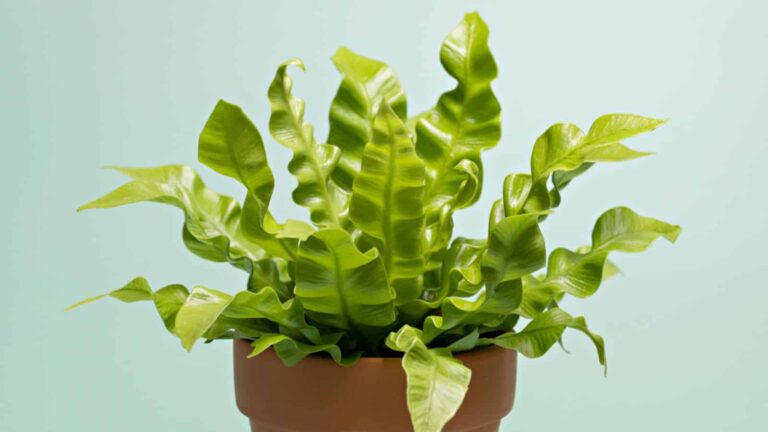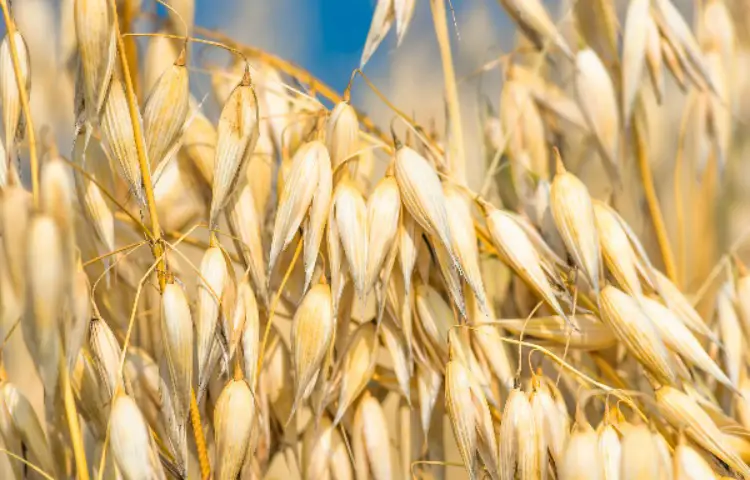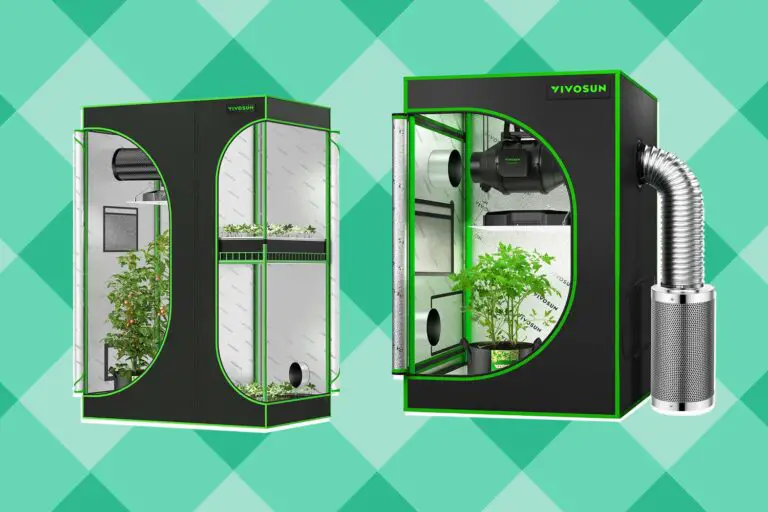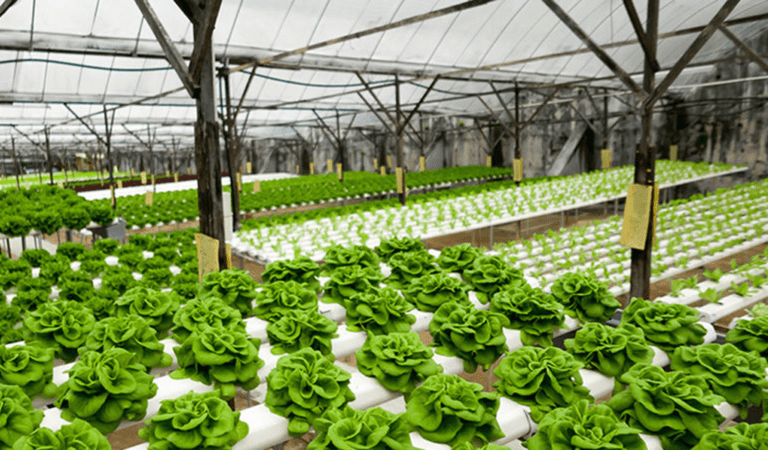How to Prune Your Plant Roots for Better Growth and Health
Table of Contents
Understanding the Importance of Pruning Plant Roots
Pruning plant roots is a crucial aspect of plant care that often goes overlooked. When it comes to maintaining healthy plants, we often focus on pruning branches and leaves, neglecting the vital role that root pruning plays in overall plant health. Understanding the importance of root pruning is essential for gardeners and plant enthusiasts who want to foster robust and thriving plant growth.

Root pruning helps manage and control the size of plant roots, ensuring a healthy and balanced root-to-shoot ratio. By selectively removing damaged, overgrown, or circling roots, we encourage the development of new and healthy root growth. This process stimulates root branching, leading to increased nutrient absorption, water uptake, and overall plant vigor. Additionally, root pruning can prevent rootbound conditions, where the roots become tightly packed and constricted within the pot or planting space. By addressing rootbound issues, we promote healthier root systems and prevent stunted growth or root rot in the long run.
Identifying Signs of Overgrown or Damaged Roots
Overgrown or damaged roots can pose serious risks to the overall health and vitality of your plants. It is important to be able to identify signs of overgrown or damaged roots so that you can take appropriate action to address the issue. One key sign to look out for is the presence of root crowding. When roots become overgrown, they can start to intertwine and compete for space, leading to a tangled mess that restricts their ability to absorb water and nutrients effectively.
Another indicator of overgrown or damaged roots is stunted or slowed growth. When the roots are unable to adequately support the plant, it can result in a reduction in overall growth and development. This may manifest as smaller leaves, fewer flowers or fruits, and a general lack of vigor. Additionally, if you notice wilting or yellowing of the foliage, it could be a sign of root-related issues. Overgrown or damaged roots can impede the plant’s ability to access water, causing dehydration and nutrient deficiencies.

Observing these signs of overgrown or damaged roots is crucial in order to intervene and prevent further deterioration. By addressing the root issues promptly, you can help your plants thrive and ensure their long-term health and productivity. Stay tuned for the next sections of this article, where we will delve into the tools and techniques for pruning plant roots, as well as the proper timing and potential risks associated with this process.
Tools and Equipment for Pruning Plant Roots
To successfully prune plant roots, you will need to invest in the right tools and equipment. Having the proper tools not only ensures that the pruning process is efficient, but also helps to minimize any damage to the plant. Here are some of the essential tools and equipment you should have on hand for pruning plant roots:
1. Pruning Shears: Also known as hand pruners or secateurs, pruning shears are essential for cutting through small to medium-sized roots with precision. Look for shears that have a sharp, bypass blade for clean cuts and ergonomic handles for comfortable use.
2. Loppers: When dealing with thicker roots, loppers come in handy. These long-handled pruning tools have heavier blades that can tackle larger roots. Choose loppers with extendable handles for better reach and leverage during pruning.
3. Root Pruning Saw: For very thick or woody roots, a root pruning saw is necessary. This saw has a specialized blade with sharp teeth that can easily cut through tough root systems. Opt for a saw with a curved blade for better control and maneuverability.
4. Rooting Knife: A rooting knife is a versatile tool that can be used for various tasks, including root pruning. It has a sharp and narrow blade that helps to make precise incisions without causing excess damage to surrounding roots.
5. Garden Gloves: Always make safety a priority when pruning plant roots. Invest in a quality pair of garden gloves to protect your hands from potential injuries, such as cuts or scratches from prickly plants or sharp tools.
By equipping yourself with these essential tools and equipment, you’ll be well-prepared to effectively prune plant roots and promote healthy growth. Remember to clean and maintain your tools regularly to ensure their longevity and optimal performance.
Preparing Your Plants for Root Pruning
Preparing your plants for root pruning is an essential step in ensuring a successful and healthy pruning process. Before you begin, it is crucial to assess the overall health and condition of your plants. Look for signs of stress, such as wilting, yellowing leaves, or stunted growth, as these could indicate underlying issues that need to be addressed before root pruning.
Next, make sure you have all the necessary tools and equipment readily available. This includes sharp, clean pruning shears or a root saw, a sturdy pair of gloves to protect your hands, and a sterilizing solution to prevent the spread of diseases. It’s also a good idea to have a bucket of water nearby to rinse off any dirt or debris from the roots during the pruning process.
Once you have gathered your tools, carefully remove the plant from its pot or dig around the base of the plant if it’s in the ground. Gently shake off any loose soil to expose the roots. Take a close look at the roots and identify any damaged or diseased sections. These should be pruned away to promote healthy regrowth.
In addition, consider performing a root wash to remove excess soil and stimulate root growth. This involves rinsing the roots with a gentle stream of water to remove any compacted soil or debris. This process not only improves the plant’s nutrient absorption but also provides a clean canvas for root pruning.
By taking these steps to prepare your plants for root pruning, you are setting the stage for a successful and beneficial pruning process. Stay tuned for the step-by-step guide on how to prune plant roots, where we will delve into the techniques and best practices for achieving optimal results.
Step-by-Step Guide: Pruning Plant Roots
When it comes to pruning plant roots, it is important to approach the task with care and precision. Here is a step-by-step guide to help you navigate the process successfully.
1. Assess the plant: Before diving into root pruning, take a close look at the plant and evaluate its overall health. Look for signs of overgrown or damaged roots, such as stunted growth, wilting leaves, or root-bound containers. This assessment will guide your pruning strategy and help you determine the extent of pruning required.
2. Choose the right tools: Pruning plant roots requires the use of certain tools and equipment. Depending on the size of the roots and the plant itself, you may need a sharp pruning saw, bypass pruners, or even a root pruning knife. Ensure that your tools are clean and sharp to minimize damage to the plant.

By following these initial steps, you can set the foundation for a successful root pruning process. Remember, proper assessment and the use of appropriate tools are key to achieving the desired results in maintaining healthy and thriving plants. In the following sections, we will delve deeper into the techniques and considerations for pruning different types of plants. Stay tuned!
Techniques for Pruning Different Types of Plants
Techniques for Pruning Different Types of Plants
When it comes to pruning plants, it is important to understand that different species require specific techniques to ensure their optimal growth and health. Tailoring your pruning approach to the specific needs of each plant is essential for achieving desired results. Let’s explore some techniques that are commonly used for pruning different types of plants.
1. Fruit Trees: Pruning fruit trees is crucial for promoting proper growth and maximizing fruit production. Pruning should be done during dormant periods to minimize stress on the tree. It is important to remove dead, damaged, or diseased branches, as well as those that cross or rub against each other. Pruning should also involve thinning out crowded or weak branches to enhance air circulation and light penetration. Additionally, the removal of water sprouts and suckers will redirect the tree’s energy towards fruit development.
2. Ornamental Shrubs: Pruning ornamental shrubs not only helps maintain their desired shape and size but also encourages robust flowering and foliage display. Depending on the flowering habit of the shrub, pruning can be done either immediately after flowering or during the dormant period. Start by removing any dead or diseased branches, followed by cutting back growth that disrupts the plant’s overall shape. Thinning out dense areas promotes better air circulation and reduces the risk of fungal diseases. Lastly, consider rejuvenation pruning every few years to stimulate new growth and rejuvenate the shrub’s appearance.
Remember, these are just a couple of examples, and each plant type may have specific pruning requirements. By understanding the unique needs of different plants, you can ensure that your pruning techniques are tailored for their individual growth patterns and characteristics. Stay tuned for the next section, which will highlight the importance of proper timing for root pruning.
Ensuring Proper Timing for Root Pruning
To ensure proper timing for root pruning, it is crucial to understand the natural growth cycle of plants and their specific needs. Timing is essential to minimize stress and maximize the chances of successful root pruning.
Here’s a table on ensuring proper timing for root pruning:
| Timing | Types of Plants | Best Practices |
|---|---|---|
| Early Spring | Deciduous Trees and Shrubs | Perform root pruning before the onset of new growth. |
| Late Fall | Evergreen Trees and Shrubs | Root prune after the growing season, but before winter. |
| Dormant Season | Perennials and Ornamentals | Optimal time is during dormancy, typically late fall or winter. |
| Post-Transplant | Newly Planted Trees | Wait until the tree is established before root pruning. |
| Pre-Flowering | Flowering Shrubs | Root prune before the flowering season for minimal stress. |
For most plants, the best time to prune the roots is during the dormant season. This is typically in late winter or early spring, just before new growth begins. Pruning during this period allows the plants to recover and establish new roots before the demands of the growing season. However, it’s important to note that some plants, such as certain fruit trees or evergreens, may have different timing requirements. Consulting a reputable horticulturist or doing thorough research on the specific plant species is recommended to determine the optimal timing for root pruning.
• The best time to prune roots is during the dormant season, typically in late winter or early spring.
• Pruning during this period allows plants to recover and establish new roots before the growing season begins.
• Some plants, like certain fruit trees or evergreens, may have different timing requirements for root pruning.
• Consulting a reputable horticulturist or conducting thorough research on specific plant species is recommended.
Addressing Common Concerns and Misconceptions about Root Pruning
Addressing Common Concerns and Misconceptions about Root Pruning
Root pruning is an essential practice in plant care that often raises concerns and misconceptions among gardening enthusiasts. One common concern is whether root pruning will harm the plant. It is important to note that when done correctly and at the right time, root pruning can actually benefit the plant’s overall health and growth. The key is to use proper techniques and tools, and to ensure the plant is in the optimal condition for root pruning.
Another misconception is that root pruning is only necessary for large, mature plants. While it is true that mature plants with overgrown roots may require more frequent root pruning, young plants can also benefit from this practice. Root pruning helps promote root system development, allowing the plant to establish a strong foundation early on. By removing excess roots, the plant’s energy can be redirected towards foliage growth and nutrient uptake.
Addressing these concerns and misconceptions is crucial to help gardening enthusiasts understand the true benefits of root pruning. With proper knowledge and guidance, they can confidently incorporate this practice into their plant care routine, leading to healthier and more resilient plants. In the following sections, we will delve further into the techniques, timing, and precautions involved in root pruning, providing a comprehensive guide to help you achieve successful results.
Potential Risks and Precautions in Root Pruning
Potential Risks and Precautions in Root Pruning
As with any gardening technique, root pruning carries certain potential risks that gardeners should be aware of and take precautions to minimize. One of the main risks is the possibility of damaging the vital root system of the plant. Improper pruning techniques or excessive pruning can lead to root injury, which can significantly impact the overall health and viability of the plant.

To mitigate the risk of root damage during pruning, it is crucial to use the right tools and equipment specifically designed for root pruning. Sharp, sterile pruning shears or a root pruning saw can help make clean, precise cuts without causing unnecessary harm. Additionally, it is important to carefully assess the condition of the roots before pruning. If the roots appear healthy and are not causing any problems, it may be best to avoid unnecessary pruning altogether. Proper timing is also crucial – pruning during excessively hot or cold weather can stress the plant and hinder its ability to recover. Regularly monitoring the health of pruned plants and providing appropriate post-pruning care can further reduce the risks associated with root pruning.
Aftercare: Nurturing Pruned Plants for Optimal Growth
Once you have completed the process of pruning the roots of your plants, it is important to provide proper aftercare to ensure their optimal growth. Nurturing pruned plants requires attention to their specific needs and providing the necessary support for their recovery. One crucial aspect of aftercare is maintaining a consistent watering schedule. While it is essential not to overwater, especially in the first days after pruning, you should ensure that the plants receive enough moisture to sustain their growth. Monitoring the soil moisture level and adjusting the watering accordingly will help prevent the plants from becoming stressed or dehydrated.
Another important aspect of aftercare is providing adequate nutrients to the plants. Pruning can sometimes disturb the balance of nutrients in the soil or affect the plants’ ability to absorb nutrients efficiently. To counteract this, you may consider applying a balanced fertilizer or organic amendments to replenish the nutrients and promote healthy growth. Moreover, it is beneficial to monitor the plants’ overall health and growth patterns closely. Regularly inspecting the leaves, stems, and the overall appearance can help you identify any potential issues or signs of stress. Taking prompt action, such as addressing pest infestations or adjusting environmental conditions, can prevent further damage and support the plants’ recovery. Ultimately, nurturing pruned plants requires both diligence and patience as they regain their vigor and flourish once again.
Monitoring and Evaluating the Impact of Root Pruning
Monitoring and evaluating the impact of root pruning is essential to ensure the health and vitality of your plants. By closely observing the effects of this process, you can make informed decisions about the future care and maintenance of your garden. One of the key aspects to monitor is the regrowth of the pruned roots. This will indicate how well the plants are responding to the pruning and whether they are forming new, healthy roots.
Another aspect to consider when evaluating the impact of root pruning is the overall health and vigor of the plants. Are they exhibiting signs of stress or decline? Or are they showing signs of renewed growth and vitality? Monitoring the overall condition of the plants, including their leaf color, size, and overall appearance, can provide valuable insights into the success of the root pruning process. Additionally, paying attention to any changes in the flowering or fruiting patterns can help assess the long-term impact of root pruning on plant productivity.
Factors to Consider before Pruning Plant Roots
Factors to Consider before Pruning Plant Roots
Before undertaking the task of pruning plant roots, it is crucial to consider several factors to ensure the health and vitality of your plants. Firstly, it is essential to assess the age and condition of the plant. Younger plants with less established root systems are more susceptible to stress and may require extra care during the pruning process. On the other hand, older plants with well-developed roots have a better ability to recover from pruning.
Another factor to consider is the type of plant you are dealing with. Different plants have varying levels of tolerance to root pruning. For instance, some plants, like fruit trees, respond well to root pruning, resulting in enhanced fruit production. However, other plants, such as some types of palms, are particularly sensitive to root disturbance and may suffer irreversible damage if pruned improperly.
Additionally, understanding the growth pattern of the plant is essential. Some plants have taproots that extend deep into the soil, while others have a more fibrous root system that spreads horizontally. Understanding the root structure will help determine the appropriate pruning technique and ensure that the plant’s overall stability is not compromised.
Lastly, it is crucial to consider the timing of root pruning. The ideal time for root pruning varies depending on the plant species and the local climate. Pruning during the dormant season, when the plant is not actively growing, is generally recommended. This allows the plant to allocate its resources towards healing and regenerating its roots without being burdened by other growth-related processes. However, some plants may have specific timing requirements, and it is important to research and adhere to these guidelines to optimize the success of root pruning.
By carefully considering these factors, gardeners and plant enthusiasts can make informed decisions when it comes to pruning plant roots. This will not only promote the overall health and vigor of the plants but also ensure the longevity and sustainability of your garden.
Expert Tips and Tricks for Successful Root Pruning
Expert Tips and Tricks for Successful Root Pruning:
1. Use the right tools and equipment: When it comes to root pruning, having the right tools can make all the difference. A sharp, clean pair of pruners or a pruning saw should be your go-to tools for cutting through roots effectively. Remember to disinfect your tools before and after use to prevent the spread of diseases. Additionally, consider using a root saw or an air spade for larger, more intricate root systems.
2. Understand the timing: Timing plays a crucial role in successful root pruning. The ideal time to prune plant roots is during the dormant season, typically in late winter or early spring before new growth begins. Pruning during this period allows the plant to allocate its resources towards healing and regenerating the roots, resulting in optimal growth in the growing season. However, specific plant species may have different preferences and requirements, so always research and consider the plant’s specific needs before pruning its roots.
What is the purpose of root pruning?
The purpose of root pruning is to maintain the health and vitality of plants by controlling their root growth. It helps to prevent overgrowth, improve nutrient uptake, and promote overall plant growth.
How can I identify signs of overgrown or damaged roots?
Signs of overgrown or damaged roots include stunted growth, yellowing or wilting leaves, root circling around the pot, and roots emerging from the surface of the soil. These signs indicate that root pruning may be necessary.
What tools and equipment do I need for pruning plant roots?
Some common tools and equipment for pruning plant roots include sharp pruning shears or scissors, a root pruning saw or knife, a root ball pruner, and a root barrier material. These tools ensure precision and minimize damage during the pruning process.
How do I prepare my plants for root pruning?
To prepare your plants for root pruning, start by watering them thoroughly a day or two before pruning. This ensures that the plant is well-hydrated and less stressed during the pruning process. Additionally, gently loosen the soil around the root ball to make it easier to access the roots.
What are the different techniques for pruning different types of plants?
The techniques for pruning plant roots vary depending on the type of plant. For woody plants, such as shrubs or trees, root pruning can be done by creating a trench around the plant and cutting through the roots. For herbaceous plants, like annuals or perennials, root pruning can be done by gently lifting the plant out of the soil, trimming the roots, and replanting it.
When is the proper timing for root pruning?
The proper timing for root pruning depends on the specific plant species. Generally, root pruning should be done during the dormant season or just before the active growth period. This allows the plant to recover and reestablish its root system without causing too much stress.
What are the potential risks and precautions involved in root pruning?
Root pruning, if not done properly, can lead to plant stress, nutrient deficiencies, or even death. It is essential to use sharp and clean tools, avoid excessive pruning, and provide adequate aftercare to minimize these risks. Additionally, it is important to research and understand the specific needs of each plant before pruning its roots.
How do I nurture pruned plants for optimal growth?
After root pruning, it is important to provide proper aftercare to nurture the pruned plants for optimal growth. This includes watering the plants regularly, providing adequate sunlight, and feeding them with a balanced fertilizer to promote healthy root regeneration and overall plant growth.
How do I monitor and evaluate the impact of root pruning?
To monitor and evaluate the impact of root pruning, observe the plant’s growth and overall health in the following weeks and months. Look for signs of new root growth, improved foliage, and increased vigor. Regularly assess the plant’s response to determine if further pruning or adjustments are needed.
What factors should I consider before pruning plant roots?
Before pruning plant roots, consider factors such as the plant’s age, health, and growth rate. Additionally, take into account the specific pruning requirements of different plant species. It is also important to assess the potential impact on nearby structures or other plants when deciding to prune roots.

Pallavi Gupta is a burgeoning writer at SouthElMonteHydroponics, blending her passion for data analysis with a keen interest in biotechnology. Currently pursuing a Bachelor’s in Biotechnology at Amity University, Pallavi delves into the intricacies of life sciences while gaining hands-on experience in the exciting world of data analysis. Her unique background provides a fresh perspective on hydroponic farming, as she explores the intersection of biotechnology and sustainable agriculture. Through her writing, Pallavi aims to bridge the gap between data-driven insights and innovative farming practices, inspiring others to harness technology for a greener future.






